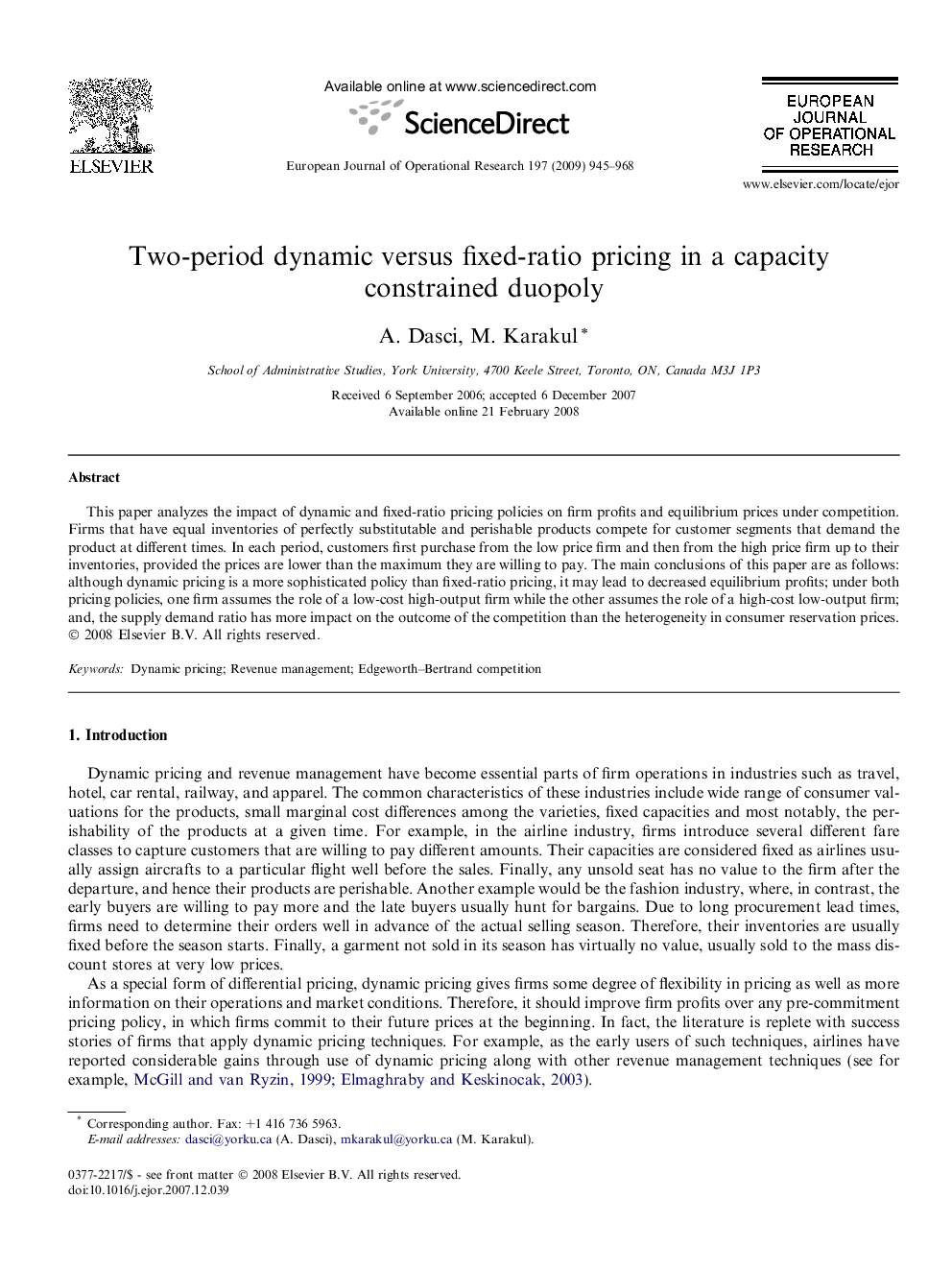| کد مقاله | کد نشریه | سال انتشار | مقاله انگلیسی | نسخه تمام متن |
|---|---|---|---|---|
| 482619 | 1446144 | 2009 | 24 صفحه PDF | دانلود رایگان |

This paper analyzes the impact of dynamic and fixed-ratio pricing policies on firm profits and equilibrium prices under competition. Firms that have equal inventories of perfectly substitutable and perishable products compete for customer segments that demand the product at different times. In each period, customers first purchase from the low price firm and then from the high price firm up to their inventories, provided the prices are lower than the maximum they are willing to pay. The main conclusions of this paper are as follows: although dynamic pricing is a more sophisticated policy than fixed-ratio pricing, it may lead to decreased equilibrium profits; under both pricing policies, one firm assumes the role of a low-cost high-output firm while the other assumes the role of a high-cost low-output firm; and, the supply demand ratio has more impact on the outcome of the competition than the heterogeneity in consumer reservation prices.
Journal: European Journal of Operational Research - Volume 197, Issue 3, 16 September 2009, Pages 945–968